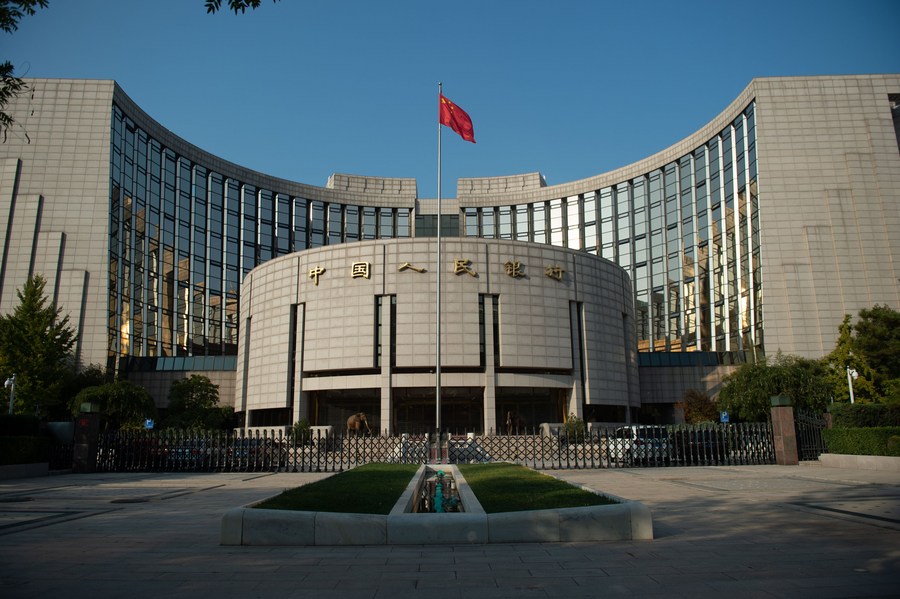
File photo shows an exterior view of the People's Bank of China in Beijing, capital of China. (Xinhua/Peng Ziyang)
China has stepped up reform in its credit rating industry as new rules to improve standards and regulations of the sector took effect on Aug. 6, amid the country's broader push to curtail financial risks and further unleash the potential of its huge bond market.
With credit ratings playing a key role in China's bond market, the country has rolled out a raft of measures to fine-tune its credit rating model after a series of defaults from highly rated enterprises last year.
Under the previous rating model where bond issuers pay for the rating services, issuers often interfere with credit rating decisions and tempt rating agencies to give them high ratings since they have common interests.
The proportion of AAA ratings in China's bond market, which represents the highest investment grade, reached 20 percent, higher than that of developed bond markets, which is less than 5 percent.
Data showed that in 2020, issuers with high ratings accounted for 82 percent of bond defaults in the country's bond market.
Blamed for inflated credit ratings, the domestic rating sector failed to reflect the real credit status of firms and had poor early warning capabilities ahead of default, which rocked investor confidence and damaged the credibility of China's rating businesses.
Last August, China's bond regulator flagged the risk of inflated credit ratings as well as other shortcomings in the rating industry and issued a circular to tighten scrutiny over the sector.
According to the circular, the country's central bank and four other government departments vowed to set up a quality appraisal system with a default ratio at its core, and build rating methodology systems that can achieve reasonable differentiation by the end of 2022.
The circular encouraged issuers to rely on multiple sources, urged investors to pay for rating services and disclose the results, and stressed the importance of cross-validation among multiple rating agencies and different credit rating models.
The credit rating is more objective and fair when investors pay for the rating services, given that investors have fewer shared interests with rating agencies, said Wang Dawei, a manager from Huaxia Bank.
"To a certain extent, the disclosure of rating results helps keep ratings within a reasonable range, and provides useful investment references for financial institutions," said Li Xin, head of China Bond Rating Co., Ltd.
Since the issuance of the circular, the credit rating agency disclosed the ratings and reports of around 800 bond issuers, accounting for 30 percent of issuers in the interbank market, according to Li.
Of the total adjustments made in the bond market in 2021, some 146 and 76 firms saw their credit rating and outlook go down, respectively, while only 65 enterprises registered upgrades in their ratings and outlooks, down from 301 last year, data showed.
Positive changes have taken place in credit rating quality in the past year, said Wu Yuhui, a professor at the School of Management of Xiamen University.
Rating agencies have gradually lowered the proportion of high ratings, and a rating system that can achieve more reasonable credit differentiation is taking shape, according to Wu.
China boasts the second-largest bond market in the world with growing appeal to global investors.
By the end of May, the size of China's bond market reached 139 trillion yuan (about 20.62 trillion U.S. dollars), and bonds in China's market held by overseas institutions totaled 3.74 trillion yuan, central bank data showed. ■






